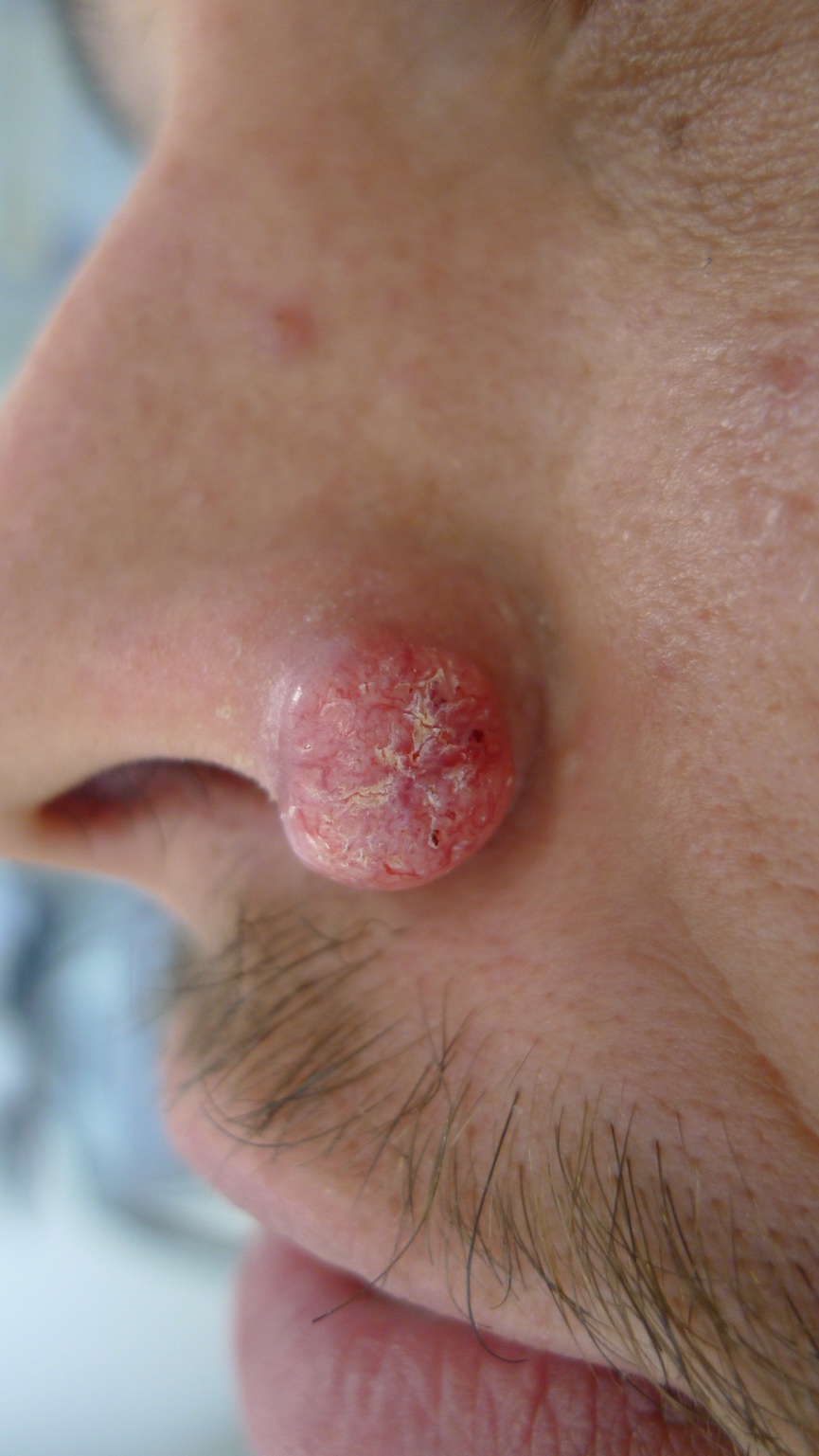Keratoacanthoma
What is keratoacanthoma?
Keratoacanthoma is a skin tumour that develops on sun damaged skin. It is often difficult to distinguish it from a more aggressive lookalike, a squamous cell cancer (SCC).

What causes keratoacanthoma?
The cause of keratoacanthoma is unknown. It most frequently occurs on the sun exposed skin of the head and neck, arms and legs and is more common in fair sun-damaged individuals or people whose immune system is suppressed by disease or treatment (such as transplant patients).
Keratoacanthoma is thought to be a less aggressive form of squamous cell cancer that may resolve without treatment over a period of some months. As it is very difficult to distinguish between an early keratoacanthoma and squamous cell cancer, most are biopsied or excised (removed), as squamous cell cancer, if left untreated, may spread to regional lymph nodes.
There are rare genetic conditions in which people experience large numbers of keratoacanthomas.
What does keratoacanthoma look like?
It usually develops as a single, rapidly growing, often tender, round red pimple-like lump that develops a central crater which becomes filled with a hard scaly core. Gradually, after some weeks of growth, the edges may start to flatten and the scaly core may fall out leaving a saucer-like scar. In the early rapid growth period the lump is often sore and tender.

What other problems can also occur with keratoacanthoma?
Most keratoacanthomas are about 5 to15 mm in diameter, but some may be several centimetres in diameter or there can be multiple grouped growths. This can make treatment more difficult.
How is keratoacanthoma diagnosed?
The diagnosis is often suspected clinically from their appearance, but because the early rapid growth phase closely resembles a squamous cell carcinoma, a biopsy or excision (surgical removal) is usually performed. The histopathology of these two tumours can also be extremely difficult to distinguish so often complete removal is preferable.
How is keratoacanthoma treated?
It is surgically excised (removed) where this is possible.
If an individual cannot have surgery then radiotherapy or injections of chemotherapeutic agents into the tumour can be used successfully.
In people who develop multiple keratoacanthomas (such as a transplant patient or a badly sun damaged individual), an oral retinoid medication may be prescribed to reduce the number of skin cancers developing. Acitretin is the drug of choice and is effective in reducing new keratoacanthomas from developing.
The individual must protect his/her skin from the sun by wearing appropriate protective clothing and regularly applying a broad spectrum sunscreen when outdoors.
Regular skin checks are necessary to look for new keratoacanthomas and other forms of sun induced skin cancers.
This information has been written by Dr Davin Lim
Updated 18 August 2015